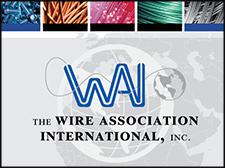WAYLAND ADDITIVE DEMONSTRATES COMMERCIAL UPTAKE AND UNIQUE ADVANTAGES OF CALIBUR3 AT RAPID-TCT
Wayland Additive now has a growing number of Calibur3 machines installed around the world that are being used in commercial settings, and is successfully demonstrating that its technology is introducing the use of industrial 3D printing in sectors and for applications areas where the AM process has previously struggled.
(4th July 2024, Huddersfield, UK) Leading metal-AM innovator, Wayland Additive, will be once again exhibiting at Rapid-TCT on stand 2461 June 25-27, and demonstrating its market dominance in the area of large-scale metal AM parts in a range of difficult to process materials.
Wayland Additive now has a growing number of Calibur3 machines installed around the world that are being used in commercial settings, and is successfully demonstrating that its technology is introducing the use of industrial 3D printing in sectors and for applications areas where the AM process has previously struggled. This is due to the fact that the Calibur3 features the patented NeuBeam® process which has unique high temperature capabilities that opens up a much wider palette of metal material options.
Peter Hansford, Chief Revenue Officer at Wayland says, "The NeuBeam® process delivers on all of the advantages of metal electron beam (eBeam) powder bed fusion (PBF) technology, while overcoming the troublesome issues that have traditionally limited wider adoption. Until the development of NeuBeam®, eBeam technologies were always unstable, and were bedevilled by charging issues. This meant the process needed to be tightly controlled because small changes could upset the balance of the process, leading to instability (smoke events) which are almost always catastrophic. Calibur3's NeuBeam® or neutralising technology eliminates the chance of smoke events, leaving a very stable environment within which to work. Because of this, it's much easier to change parameters without disasters. This allows us to give customers what they want, the ability to tune parameters for production, to suit their needs, improving part quality or mechanical properties much more quickly than has previously been possible."
NeuBeam® is a hot part process rather than a hot bed process. This efficiently creates parts that are free of residual stresses. Furthermore, because the high temperatures are only applied to the part and not the bed, free-flowing powder post-build (no sinter cake) and stress-free parts alongside reduced energy consumption are ensured. This is a win win for end users, faster printing using less energy.
Hansford continues, "So we have process stability, and this allows flexibility when choosing melt temperature and melt strategies. But another key to the Calibur3 and the NeuBeam® process which we will be demonstrating through an array of parts on our stand at Rapid-TCT is the vastly improved metallurgy capabilities of NeuBeam®, which unlocks a plethora of complex metal production opportunities that current metal AM processes struggle with. This is because the NeuBeam® process is compatible with a much wider range of metal powders, including but not limited to refractory metals and highly reflective alloys. The issue of materials in metal AM is hugely important, with many users forced to use new alloy derivatives created specifically for AM. This leaves them with two unknown quantities - a new process and a new material. This is where NeuBeam® really breaks new ground, with the ability to process existing metal materials, which reduces the pain burden when qualifying new parts."
Attendees at Rapid-TCT will see parts produced on the Calibur3 from a variety of materials including titanium and tungsten, the NeuBeam® process also able to process nickel, copper, high carbon steels, stainless steel, and cobalt based alloys among others. NeuBeam® is not just material agnostic, but it can produce complex geometries that are impossible on other eBeam systems, and is typically 30-40% faster by removing the need to maintain and sinter the cake.
Attendees at Rapid-TCT are invited to stand 2461 to discuss how the use of Wayland's Calibur3 metal-AM system can stimulate innovation and promote metal-AM into application areas previously impossible.
www.waylandadditive.com
Featured Product

